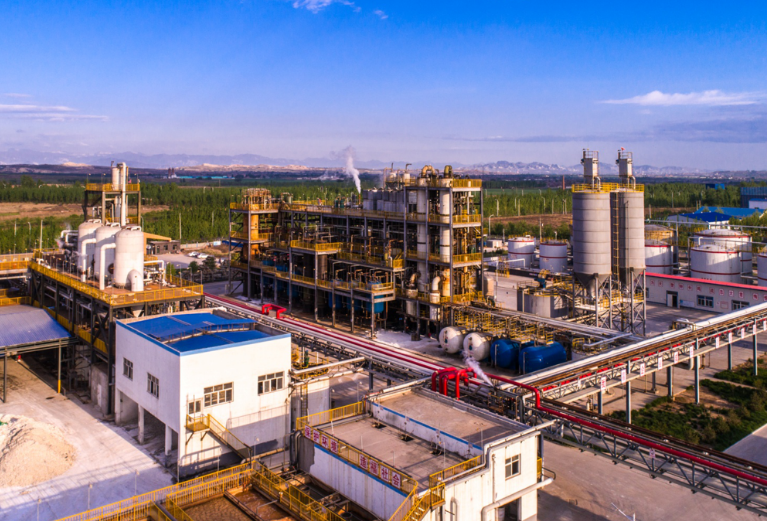Introduction to Mono-Ethylene Glycol (MEG)
Mono-ethylene glycol (MEG) is an important industrial chemical, primarily used as a precursor for polyester fibers, antifreeze, and as a component in other chemical applications. Given its wide usage, the efficient and environmentally friendly production of MEG is a topic of significant interest. Among the various methods for MEG production, the synthesis from syngas (a mixture of carbon monoxide and hydrogen) via CO coupling reactions has garnered attention for its potential to provide a green and efficient route.
The Syngas Route to MEG Production
The synthesis of mono-ethylene glycol via syngas proceeds in two key steps. These include:
1. Carbonylation of Alkyl Nitrile – This is a self-closing, green step where alkyl nitriles undergo carbonylation to produce dialkyl oxalate.
2. Hydrogenation of Dialkyl Oxalate – In this step, the dialkyl oxalate is hydrogenated to produce mono-ethylene glycol.
This method stands out for its environmental friendliness and efficiency, making it a promising pathway for MEG production.

Step 1 - Carbonylation of Alkyl Nitrile to Dialkyl Oxalate
What is Carbonylation?
Carbonylation refers to the process of adding a carbon monoxide (CO) molecule to a substrate, resulting in the formation of a carbonyl group. In this case, the substrate is an alkyl nitrile, and the CO coupling results in the formation of a dialkyl oxalate.
The Self-Closing Green Step
One of the main advantages of the syngas-to-MEG process is that the carbonylation of alkyl nitrile is a self-closing process. This means that once the reaction is initiated, it sustains itself, reducing the energy requirement and leading to less by-product formation. This step is often referred to as the "green" aspect of the reaction because it minimizes the environmental impact.
Step 2 - Hydrogenation of Dialkyl Oxalate to Mono-Ethylene Glycol
The Hydrogenation Process
Hydrogenation is the process of adding hydrogen atoms to a compound. In the second step of MEG synthesis, dialkyl oxalate undergoes hydrogenation, where hydrogen molecules are added to break down the oxalate and convert it into mono-ethylene glycol.
Catalysts Used in Hydrogenation
The hydrogenation step requires the use of specific catalysts to improve efficiency and speed up the reaction. Palladium-based and copper-based catalysts are the most common for this step. These catalysts help to facilitate the addition of hydrogen atoms to dialkyl oxalate, ensuring a higher yield of MEG.
Catalysts in MEG Synthesis
Importance of Catalysts
Catalysts play a crucial role in the efficiency of chemical reactions. In the synthesis of MEG from syngas, the catalysts used during the carbonylation and hydrogenation steps are critical in determining the reaction rate, selectivity, and overall yield.
Palladium-Based Catalysts
Palladium is one of the most efficient catalysts for both carbonylation and hydrogenation steps. It provides the right balance of reaction speed and selectivity, ensuring that side reactions are minimized.
Copper-Based Catalysts
Copper-based catalysts, on the other hand, are often used in the hydrogenation of dialkyl oxalate. These catalysts are preferred in some processes due to their cost-effectiveness and availability compared to palladium.
Reaction Kinetics of Syngas to MEG Process
Understanding Reaction Kinetics
Reaction kinetics refers to the study of how fast a chemical reaction occurs. In the MEG synthesis process, understanding the reaction kinetics is essential for optimizing production efficiency.
Factors Affecting Kinetics
Several factors can influence the reaction kinetics of the syngas-to-MEG process. These include the concentration of reactants, the pressure and temperature of the reaction, and the type of catalyst used. By manipulating these variables, manufacturers can optimize the speed and yield of MEG production.
Reaction Pathways for MEG Synthesis
Primary Pathways
The primary reaction pathway for MEG synthesis involves the carbonylation of alkyl nitrile to dialkyl oxalate, followed by the hydrogenation of the oxalate to mono-ethylene glycol.
Side Reactions and By-Products
Although the reaction pathway for MEG synthesis is fairly straightforward, side reactions can occur, leading to the formation of by-products. These by-products can reduce the overall yield of MEG and must be carefully managed during the production process.
Environmental Benefits of the Syngas-to-MEG Process
Green Chemistry
One of the key advantages of this method for MEG production is its alignment with green chemistry principles. The self-closing nature of the carbonylation step reduces energy consumption and minimizes waste, making it a more sustainable option compared to other methods.
Reduced CO2 Emissions
The syngas-to-MEG process can also help reduce CO2 emissions, as it utilizes carbon monoxide as a feedstock. This allows for more efficient use of carbon resources and can help lower the carbon footprint of MEG production.
Industrial Applications of MEG
Polyester Production
One of the largest uses of mono-ethylene glycol is in the production of polyester fibers, which are used in textiles, packaging materials, and a variety of consumer goods.
Antifreeze and Coolants
MEG is also widely used in the production of antifreeze and coolants, which help regulate the temperature of engines and machinery, particularly in the automotive and aerospace industries.
Conclusion
In summary, the synthesis of mono-ethylene glycol via CO coupling reactions from syngas offers an efficient and environmentally friendly alternative to traditional production methods. The process involves two key steps: carbonylation of alkyl nitrile to dialkyl oxalate and hydrogenation of oxalate to MEG. The use of catalysts, particularly palladium- and copper-based catalysts, is essential for optimizing the efficiency and yield of this process. With its potential to reduce carbon emissions and align with green chemistry principles, this method represents a promising path forward for MEG production.
FAQs
1. What is mono-ethylene glycol (MEG) used for?
MEG is used in the production of polyester fibers, antifreeze, and as an intermediate in various chemical applications.
2. Why is the syngas-to-MEG process considered environmentally friendly?
The process involves a self-closing carbonylation step that reduces energy consumption and minimizes by-product formation, making it a greener option.
3. What catalysts are used in the hydrogenation step of MEG production?
Palladium- and copper-based catalysts are commonly used in the hydrogenation step to improve reaction efficiency and yield.
4. What is the role of syngas in MEG production?
Syngas, a mixture of carbon monoxide and hydrogen, is the primary feedstock in the MEG production process via CO coupling reactions.
5. How does the use of syngas reduce CO2 emissions in MEG production?
Syngas utilizes carbon monoxide, allowing for more efficient use of carbon resources and reducing the overall carbon footprint of MEG production.
















